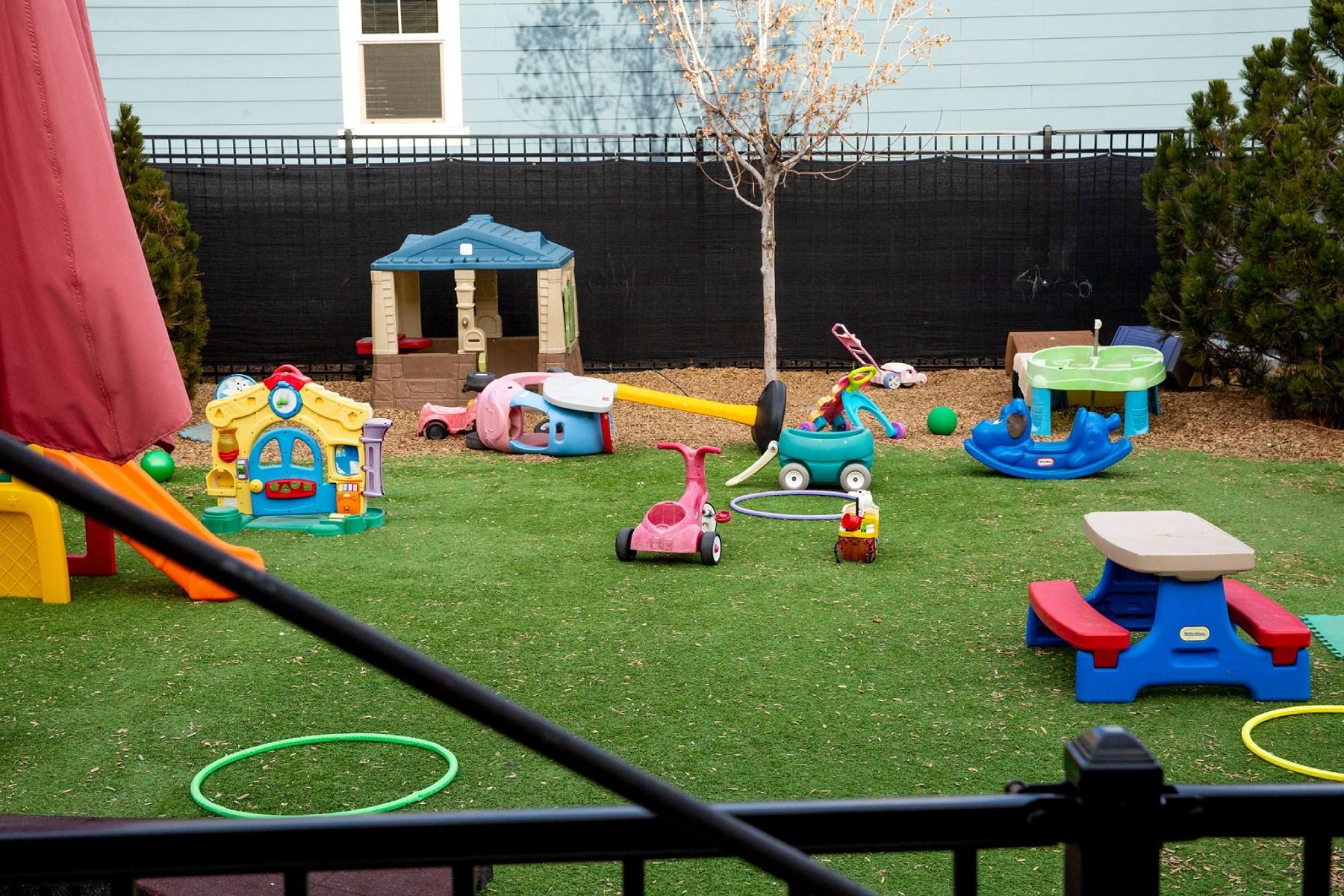
Colorado’s health department tweaked its COVID-19 response dial for the third time Wednesday, even as public health officials and experts cautioned the state of the pandemic is still somewhat unknown, with more potential hurdles ahead.
The move comes after a steady decline for many weeks in a key virus metric — hospitalizations — stalled and plateaued at a bit above 300 patients now in its hospitals being treated for coronavirus.
“I think we're at this very uncertain point in terms of COVID-19 in Colorado right now,” said Beth Carlton, an associate professor for the school at the CU Anschutz Medical Campus and member of the Colorado COVID-19 Modeling Team that provides epidemiological modeling for the state.
Carlton noted many more Coloradans have been vaccinated, especially those over 65, and the state’s positivity rate has remained below the desired 5 percent figure.
“The bad news is most of Colorado is still not vaccinated, right?” Carlton said. “Just because they're changing the dial does not mean it's time to go have a giant house party with all of your unvaccinated friends.”
What the changes mean for gyms, restaurants and gatherings
The changes gave the green light for many of the state's counties to be shifted to "Level Green'' on the state's color-coded system. According to the state’s dashboard on Wednesday, 27 of Colorado’s 64 counties are now at the green level.
That raises indoor capacity, including at bars, which have been shuttered for months, to 50 percent of full or 500 people. Offices and retail shops can now open at 75 percent capacity. All limits on "personal gathering sizes" for home parties are lifted.
“Coloradans have made great sacrifices to protect ourselves and our communities from COVID-19 over the past year,” said Jill Hunsaker Ryan, executive director of the state health department, CDPHE, said in a press release. “While this is still a time for caution, these changes to the Dial better reflect where we are in the pandemic today, and the balance we are trying to strike between disease suppression and economic hardship.”
“In terms of gyms, we're thrilled,” said Robin Jost, human resource department head for the Planet Fitness franchise group, which owns eight fitness centers in Colorado.
The move would allow gyms and fitness centers to open at 100 percent of capacity, with masks and 6-foot social distancing required. It’s the first time they could say that since last February, Jost said, adding that roughly 20 percent of gyms, 150 total, had gone under in Colorado and nationally in the pandemic.
She said an industry group, the Colorado Fitness Coaltion, had been working with the state health department “tirelessly” to make gyms safe and convince the governor’s team that the facilities aren’t a major source of cases.
“We were at 10 percent (of capacity) in November, December, January, which was not survivable and really devastated our industry,” Jost said.
Local health leaders want to see the statewide mask order stay in place
Still, the move comes at what seems to be a dicey moment for the state.
On Feb. 6, the state most recently eased restrictions. After that the decline in cases leveled. The percentage of tests coming back positive rose again and now hovers in the 4 percent range. That's well below the 12.85 percent level reached in November, but still clearly above the level at which experts would consider the virus to be suppressed.
The change came the same day one of Colorado’s key mountain tourist destinations, Pitkin County, home to ski resorts like Aspen, moved up the dial to the more restrictive “Orange” level. The reason? Increasing case numbers.
Even as the state health department made the dial change, local public health leaders urged Gov. Jared Polis to hold steady and not lift Colorado’s statewide mask order.
“We would encourage the Governor to continue the mask order until the end of the school year,” said a letter Sunday from the Colorado Association of Local Public Health Officials (CALPHO).
The group urged the mandate to continue until all residents have access to the vaccine, and until there is not a significant risk from COVID-19 variants.
“The reason is it's so important to keep our students in school, in-person learning,” said Tom Gonzales, public health director in Larimer County. “We want to have as much of that as we can and keep it so we're not having interruptions with outbreaks and contact tracing and quarantine.”
“Masks are a proven and effective control measure,” said Bob McDonald, the executive director of the Denver Department of Public Health and Environment. He said changing restrictions and easing capacity limits and then doing the same for face coverings “that might be pushing the envelope, a little bit too much, too fast.”
CALPHO also requested that the governor and all resources be used “to continue the message that public health recommendations be followed,” even as communities move to being more open. It wrote that includes the continued to wear masks, social distancing, and staying home when demonstrating symptoms.
Cautionary tales from California, UK and Brazil
One public health expert based in California called it a misstep for Colorado and other states to ease restrictions with the COVID-19 finish line potentially right around the corner, provided states like Colorado can prevent another wave of cases.
“I think these are mistakes,” said Dr. John Swartzberg, a clinical professor emeritus and expert in infectious diseases at the UC Berkeley School of Public Health. He worried states that reopened prematurely would set themselves up for another spike in cases, if not a surge like late last year then at least a “swell.”
He warned the U.S. could follow Europe in seeing another increase driven by the more contagious variant like the one that hammered the UK and another that’s currently devastating Brazil.
He warned of “this pattern of what happens in Europe presages what happens on the east coast, which presages what happens on the west coast or the western states,” he said. “And Western Europe is now in a lockdown.”
The baseline of cases seen now in Colorado and the U.S. is even higher than what was seen last summer. And Swartzberg said the higher the level of cases the greater the potential for a new even more transmissible or deadly variant could arise.
“Every person that gets infected produces billions of viral particles. And when you produce billions and billions of viral particles, some of those are going to be variants,” he said. Those who do get infected can turn into “viral factories,” which lead to more illness, hospitalizations and deaths. And a longer pandemic.
The vaccines are working, he said, but with more variants spreading around in states like Colorado, the U.S. and globally, “I don't know that we can outrace it.”
New dial, new questions
Others worry the multiple changes to the dial can be hard to keep up with, even for those who follow it closely.
“I think that the changes to the dial are confusing for businesses. We get a lot of questions locally when the new dial comes out,” said Liane Jollon, San Juan Basin Public Health’s executive director in Durango.
She said the goal of public health leaders is to “clear up the inconsistencies and give people a better picture about how some of the pieces fit together right now.”
Dawn Comstock, Jefferson County’s new public health director, also described the changes as being a bit tricky to manage. Her county is currently in the “Blue” level, one away from the one with the least restrictions “Green,” but due to an uptick this week in cases it’s now at risk of being moved to “Yellow” in the coming days. That’s if COVID-19 cases keep rising. And that would bring renewed tighter restrictions on businesses.
“This is distressing. It's concerning and it's disappointing for our community,” Comstock said. “It's disappointing to me to see our case rates go up the same day that dial three was released.”
Not everyone is opposed to giving more control to local communities.
"I'm thinking it will work better with more local control. The Front Range packed with people is different than the more rural areas with few people who are spread out," said Dr. Kurt Papenfus, an emergency physician in Cheyenne Wells on the eastern plains. "(The new dial) makes it easier for us rural counties to get back to more normal without so much paperwork for the state to give permission."
The letter from local public health directors spotlighted some of their concerns as the state looks to hand off or “devolve” some of the responsibility for the pandemic response from the state to the local level. It urged “a collaborative” state and local approach.
“If we are to work together as a public health system, we have to support and understand the impacts of this swift action on the entire public health system,” wrote Meagan Hillman, the director of Kiowa County Public Health and Jobeth Mills, who directs Lincoln County Public Health.
“The devolving of the dial to local control will leave: many Colorado local public health agencies, most acutely small and medium agencies on their own with no ability to put local public health orders in place and public health recommendations will not be regarded.”









